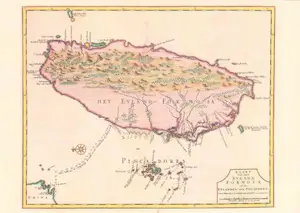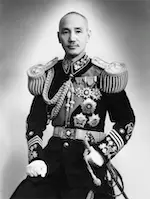Leaders of Taiwan
Taiwan has been ruled by other civilizations for centuries. Dutch, Japanese, and Portuguese colonies emerged during the Age of Exploration, and then Chinese forces took control, resulting in Taiwan's becoming first the Kingdom off Tungning–ruled by Zheng Chenggong and his successors, most notably his oldest son, Zheng Jing–and then part of the Qing in 1683. 
Successive Qing emperors restricted migration to Taiwan and discourage extensive mixing between the peoples of the island and the mainland. Japanese forces were back nearly a century later, invading the southern part of Taiwan in 1874. A war between China and France began in 1883, and French forces occupied northern parts of Taiwan the following year. The French left two years later, and the Japanese succeeded in occupying the entire island as the result of their victory in the First Sino-Japanese War. By that time, Taipei had become Taiwan's capital. Japan ruled Taiwan as part of the Japanese Empire until the end of World War II, paying special attention to the island beginning in the 1930s when war with China began anew. The Japanese defeat in World War II left Taiwan free to set its own course. 
Emerging during the Japanese occupation was the Taiwanese Cultural Association (TCA), founded by Chiang Wei-shui in 1921. The methods of this organization were mainly nonviolent resistance to Japanese rule, with the hope of establishing Taiwanese independence. Among well-known members of the TCA were Sun Yat-sen and Chiang Kai-shek (left). The Japanese government severely cracked down on movements like this, especially after its war flared up in a big way with China in 1937. The Japanese surrender resulted in the establishment of the Taiwan Provincial Government, in September 1945. Taking over as rulers were members of the Kuomintang (KMT) administration. During this time as well, China was inflamed with a civil war, between Chiang Kai-shek and others in the Republic of China government and the Chinese Communist Party, led Mao Zedong. The latter were victorious, in 1949, and Chiang Kai-shek and 2 million loyalists fled to Taiwan. The KMT had established military rule and martial law, and those continued for a time, with the government and the military in charge of most facets of Taiwanese society. The first head of the new government was Chen Yi. The KMT continued to dominate the political scene as Taiwan developed a representative government, with a National Assembly and a President. (Martial law ended only in 1987.) The first president was Chiang Kai-shek, who was elected in 1950 and served until his death, in 1975. Succeeding him as president were Yen Chia-kan, Ching Ching-kuo, and Lee Teng-hui; all of them were elected by the National Assembly, as was Chiang Kai-shek. The first president elected by popular vote was Lee Teng-hui, in 1996. He lost his bid for re-election four years later, to the first non-KMT leader, Chen Shui-bian, representing the Democratic Progressive Party, a main opposition party founded in 1986. Those two political parties have traded the leadership between them ever since, with the KMT's Ma Ying-jeou serving from 2008 to 2016, the Democratic Progressives' Tsai Ing-wen (the first female leader) serving from 2016 to 2024, and her fellow Democratic Progressive Lai Ching-te winning in 2024. |
|
Social Studies for Kids
copyright 2002–2024
David White




